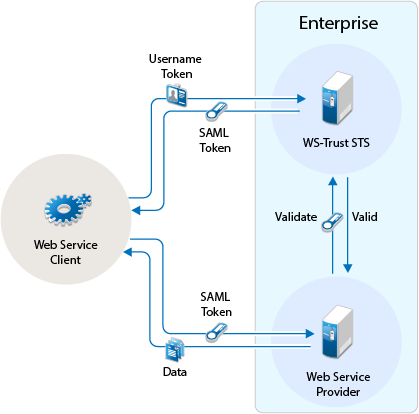Web Service Client Communicating with Token Protected Web Service Provider
In this scenario, a web service client situated outside the enterprise tries to access a web service provider hosted inside the enterprise.
This process consists of requesting a token by means of the request-response message pairs of a Request Security Token (RST) and a Request Security Token Response (RSTR). The tokens are included in SOAP messages.
The following diagram illustrates this scenario:

-
A web service client, which is outside the enterprise, sends its credentials to WS-Trust STS and request for the security token through RST.
-
WS-Trust STS verifies the client’s credentials and then issues a security token (SAML token) through RSTR.
The web service client caches the security token and then uses it in multiple requests to the web service provider.
-
The web service client presents the token to the web service provider.
-
The web service provider validates the token and sends the response to the web service client.